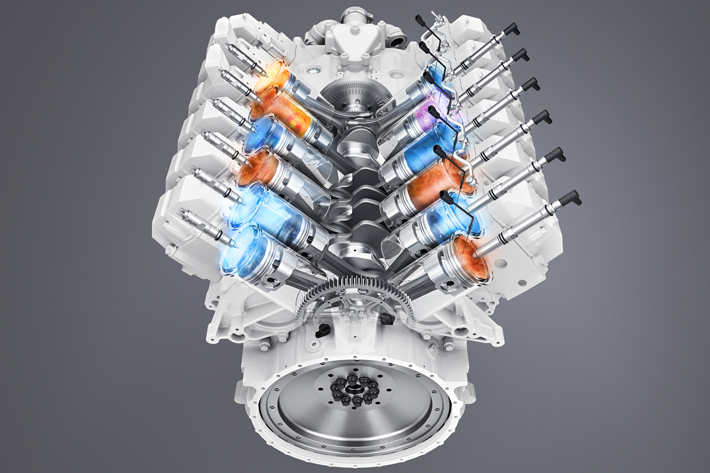Engines for Africa Available Now! Browse Through Our Relied On Automobile Parts Shop
Engines for Africa Available Now! Browse Through Our Relied On Automobile Parts Shop
Blog Article
The Pursuit for Ultimate Driving Power: Checking Out the Peak of Engine Efficiency and Technological Developments in the Automotive Industry
In the realm of vehicle design, the search of optimum driving power has actually been a ruthless mission that has actually unravelled via the evolution of engine layout and the integration of innovative innovations. From the careful workmanship of combustion engines to the rapid developments in electrical propulsion systems, the automotive field stands at the cusp of a new age identified by unmatched performance capacities. As scientists and engineers dive deeper into the worlds of computational fluid dynamics and explore ingenious fuel technologies, the perspective of opportunities increases greatly. Keep tuned as we decipher the intricate tapestry of technical advancements that are forming the future of automotive power and efficiency.
Advancement of Engine Style

Additionally, the integration of turbocharging and supercharging technologies has actually reinvented engine design by increasing power without substantially increasing engine size. These forced induction systems compress the intake air, enabling even more fuel to be ignited, therefore producing higher power outcome from a smaller sized engine. This improvement has been specifically important in enhancing the performance of smaller displacement engines while keeping gas performance standards.

Performance-Enhancing Gas Technologies
The application of advanced fuel technologies has significantly contributed to enhancing engine performance in modern-day automobiles. Biofuels, obtained from sustainable resources like sugarcane, algae, or corn, deal enhanced and minimized exhausts engine effectiveness. In addition, fuel additives and detergents are being developed to clean engine elements, enhance combustion, and decrease friction, thereby boosting overall car efficiency.
Developments in Electric Propulsion
Considerable strides in electrical propulsion modern technology have changed the vehicle industry, paving the way for a brand-new era of effective and sustainable transport. Electric vehicles (EVs) are getting popularity because of their environmental advantages and advancements in battery modern technology, allowing longer driving arrays and shorter charging times. Suppliers are investing greatly in study and growth to improve the performance of electrical propulsion systems, concentrating on boosting power outcome, enhancing power performance, and decreasing overall weight.
One noteworthy development in electric propulsion is the advancement of advanced electrical motors that deliver greater torque and power density, resulting in enhanced velocity and general driving efficiency. Additionally, regenerative braking systems have actually been refined to catch and store power throughout deceleration, more increasing the effectiveness of EVs.
Additionally, the integration of top article wise innovations, such as man-made intelligence and anticipating analytics, is enhancing the management of electrical propulsion systems, ensuring optimum efficiency under numerous driving problems. These developments in electrical propulsion are reshaping the automobile landscape, driving the sector in the direction of a much more sustainable and electrified future.
Influence of Computational Fluid Characteristics
With advancements in electrical propulsion pressing the borders of auto technology, the integration of Computational Fluid Characteristics is playing a critical function in optimizing aerodynamic performance and improving general effectiveness in vehicle design. Computational Liquid Dynamics (CFD) entails using computer simulations to examine the circulation of air around a vehicle, making it possible for designers to predict how design adjustments will certainly impact aerodynamics without the demand for pricey physical prototypes. By precisely modeling air flow patterns, CFD allows for the refinement of automobile forms to reduce drag, improve air conditioning, and improve security.
CFD enables engineers to maximize air flow around parts such as radiators, engine bays, and wheel wells, adding to boosted efficiency and general driving experience. In conclusion, the integration of Computational Fluid Dynamics stands for a considerable step forward in the quest for utmost driving power and performance in the automotive sector.
Future Patterns in Engine Advancement
In the dynamic landscape of automobile engineering, cutting-edge improvements are shaping the future trajectory of engine innovation. The future of engine style is marked by a solid focus on efficiency, sustainability, and efficiency. Producers are progressively concentrating on establishing engines that not just deliver high power results but additionally focus on ecological responsibility by improving and lowering exhausts gas performance.
One noticeable trend in engine technology is the increase of electrification. Hybrid and electrical powertrains are obtaining traction as practical choices to traditional combustion engines. These technologies use the potential for considerable decreases Get More Information in carbon exhausts and enhanced power performance, aligning with worldwide efforts to deal with climate change.
In addition, innovations in products science and manufacturing techniques are making it possible for the production of lighter and a lot more durable engine parts. This change towards lightweight products such as carbon fiber and light weight aluminum alloys contributes to enhanced efficiency and fuel economic climate.
Conclusion
Finally, the search of utmost driving power in the auto market remains to drive advancements in engine style, gas innovations, electric propulsion, and computational liquid dynamics. The development of these modern technologies is forming the future of engine advancement, leading the means for a lot more efficient and powerful lorries (engines for africa). As the market remains to press the limits of what is feasible, we can anticipate to see also a lot more cutting-edge advancements in the mission for peak efficiency
One of the vital landmarks in engine design advancement is the transition from conventional carbureted engines to modern-day fuel-injected systems. By exactly metering the fuel distribution to each cylinder, fuel-injected engines maximize burning, resulting in far better performance and lowered environmental effect.
In addition, the combination of turbocharging and supercharging modern technologies has reinvented engine layout by boosting power without substantially boosting engine dimension (engines more information for africa).The application of advanced gas innovations has considerably contributed to improving engine performance in modern cars. Furthermore, fuel ingredients and detergents are being formulated to clean engine elements, optimize burning, and minimize friction, thus boosting overall lorry performance
Report this page